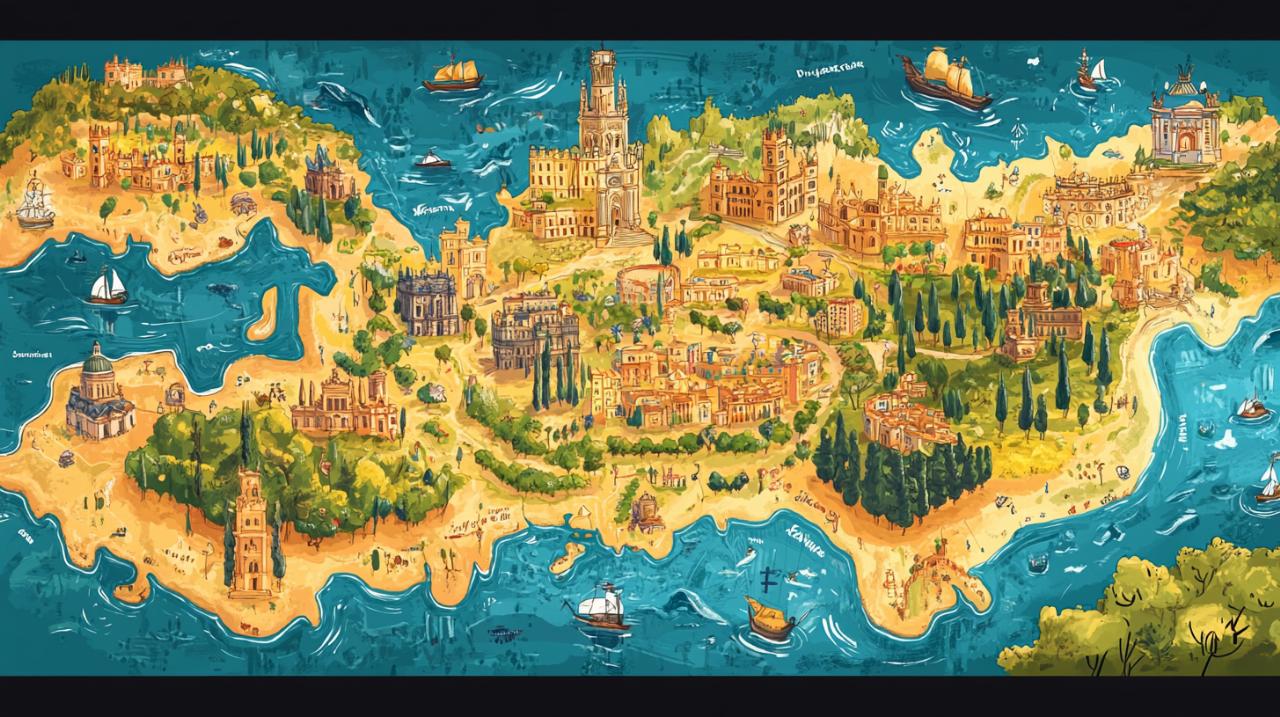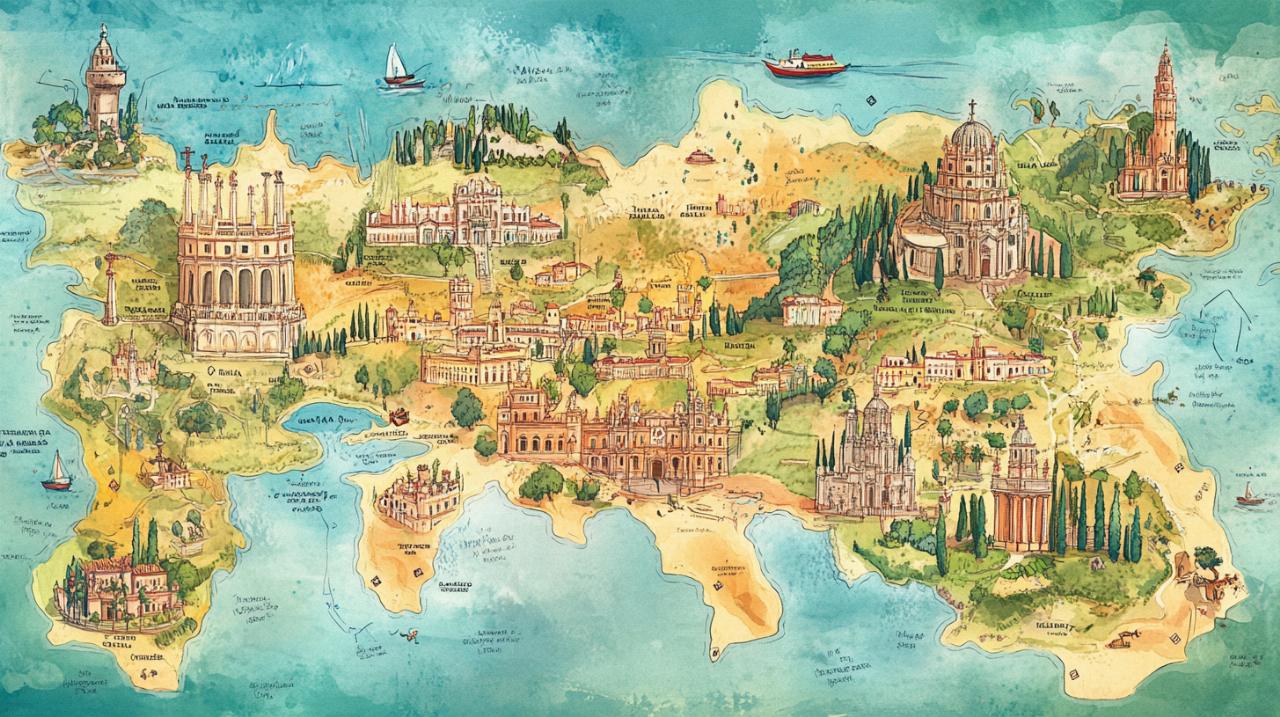Spain offers far more than sun-soaked beaches and stunning architecture; it stands as a true paradise for food lovers seeking authentic culinary experiences. From bustling city centres to quiet coastal towns, the country's diverse regions each present their own distinctive gastronomic traditions shaped by centuries of history, geography, and cultural exchange. Exploring Spain through its food reveals not only delicious flavours but also the soul of its people and their deep connection to the land and sea. This guide takes you on a journey through Spain's most remarkable cities, where every plate tells a story and every meal becomes an unforgettable adventure.
Madrid and Central Spain: A Gastronomic Journey Through the Heart of the Nation
Traditional Tapas Trails and Market Delights in the Capital
Madrid sits at the very heart of Spain, both geographically and culturally, serving as a vibrant melting pot where culinary traditions from across the nation converge. With nearly ten thousand restaurants scattered throughout the city, the capital offers an unparalleled variety of dining experiences that reflect the rich tapestry of Spanish gastronomy. The city's bustling markets, such as the historic Mercado de San Miguel, provide an authentic glimpse into local food culture, where vendors proudly display fresh produce, cured meats, artisan cheeses, and other regional specialities. Wandering through the narrow streets of neighbourhoods like La Latina or Malasaña, visitors discover countless tapas bars where locals gather to enjoy small plates alongside lively conversation. These traditional establishments serve everything from patatas bravas and croquetas to more adventurous offerings, each dish prepared with care and respect for time-honoured recipes.
From Cocido Madrileño to Michelin Stars: Dining Diversity in Madrid
Among Madrid's most iconic dishes stands the cocido madrileño, a hearty stew that embodies the warmth and generosity of the capital's cuisine. This substantial dish, which may date back to the seventeenth century, combines chickpeas, various cuts of meat, and vegetables into a comforting meal traditionally served in three courses: first the broth, then the vegetables, and finally the meats. Such traditional fare coexists alongside Madrid's thriving contemporary dining scene, where innovative chefs push culinary boundaries while honouring their roots. The city boasts numerous Michelin-starred establishments that showcase the creativity and technical prowess of Spanish gastronomy. Whether savouring a classic cocido in a century-old tavern or experiencing molecular gastronomy in a cutting-edge restaurant, Madrid offers a dining landscape that satisfies every palate and curiosity. The capital's gastronomic diversity ensures that every meal becomes an opportunity to explore the depth and breadth of Spanish culinary excellence.
Barcelona and catalonia: where mediterranean flavours meet culinary innovation
Coastal Cuisine and Fresh Seafood Along the Catalan Shores
Barcelona and the wider Catalonian region benefit immensely from their privileged position along the Mediterranean coast, where the sea meets the Pyrenees mountains. This unique geography provides access to an extraordinary range of ingredients, from the freshest seafood to mountain game and seasonal vegetables. Traditional Catalan cuisine celebrates this abundance through dishes that highlight the natural flavours of quality ingredients. Esqueixada, a refreshing salad made with shredded salt cod, tomatoes, onions, and olives, perfectly exemplifies the region's talent for transforming simple components into something truly special. Along the Costa Brava, fishing villages serve seafood so fresh it practically tastes of the sea itself, prepared with minimal fuss to let the natural flavours shine. The region's culinary traditions also embrace hearty mountain fare, creating a diverse food culture that reflects Catalonia's varied landscape and history. This blend of coastal and inland influences makes Catalonian gastronomy uniquely rich and satisfying.
Modernist Gastronomy and Avant-Garde Dining Experiences in Barcelona
Barcelona has earned international acclaim not only for its architectural marvels and artistic heritage but also for its groundbreaking approach to contemporary cuisine. The city became a global epicentre of culinary innovation, with chefs experimenting with textures, presentations, and flavour combinations that challenge traditional notions of what food can be. This avant-garde movement, whilst respecting Catalan culinary traditions, seeks to reimagine them through modern techniques and artistic vision. Restaurants throughout Barcelona offer dining experiences that engage all the senses, where each course tells a story and surprises the palate. Beyond these experimental establishments, the city maintains a strong connection to its traditional roots through dishes like calçots, spring onions grilled over open flames and served with romesco sauce, a preparation that has delighted Catalans since the twentieth century. This balance between innovation and tradition defines Barcelona's food scene, making it essential viewing for anyone interested in the evolution of Spanish gastronomy. The city's markets, such as La Boqueria, further showcase this dynamic food culture, offering everything from conventional ingredients to exotic imports that inspire both home cooks and professional chefs.
Andalusia's Culinary Treasures: Southern Delights from Seville to Granada

Moorish influences and traditional flavours across andalusian cities
Andalusia's cuisine bears the unmistakable imprint of centuries of Moorish rule, which introduced new ingredients, cooking techniques, and flavour profiles that transformed the region's gastronomy forever. Cities like Seville, Granada, and Córdoba each present their own interpretation of this rich culinary heritage, where Arabic spices meet Mediterranean ingredients to create dishes of remarkable complexity and depth. The famous gazpacho, a cold soup with Roman origins that gained its modern form through the addition of New World ingredients like tomatoes and peppers, refreshes diners during the scorching Andalusian summers. In Córdoba, the thicker variation known as salmorejo incorporates breadcrumbs for added body and richness. These cold soups represent just one facet of Andalusia's diverse food culture, which also includes slow-cooked stews, elaborately spiced meat dishes, and an array of sweets and pastries that trace their lineage directly to Moorish confectionery traditions. The region's cities each maintain their own culinary identity whilst sharing common threads that tie them together in a broader Andalusian gastronomic tradition.
Jamón, Sherry, and Fried Fish: Iconic Dishes of the Southern Region
Andalusia has given Spain some of its most celebrated culinary exports, starting with the incomparable jamón ibérico, produced from pigs raised in the region's oak forests where they feast on acorns. The province of Jaén contributes another essential element to Spanish cuisine by producing the majority of the country's olive oil, the golden liquid that forms the foundation of countless dishes. Along the coast, particularly in Cádiz, fried fish prepared with exceptional lightness and crispness has become an art form, with local establishments serving everything from tiny chanquetes to substantial cuts of fresh catch. The region's relationship with sherry, produced in the triangle formed by Jerez, Sanlúcar, and El Puerto de Santa María, adds another dimension to Andalusian gastronomy. These fortified wines, ranging from bone-dry finos to lusciously sweet Pedro Ximénez, pair beautifully with the region's tapas culture. Walking through the streets of any Andalusian city reveals countless bars where locals gather for these small plates, creating a social dining experience that forms the very heart of Spanish food culture. The combination of exceptional ingredients, Moorish influences, and convivial dining traditions makes Andalusia an essential destination for anyone seeking to understand Spanish gastronomy.
Northern spain's food scene: from basque country to valencia's coastal gastronomy
Pintxos Culture and Michelin-Starred Excellence in Bilbao and San Sebastián
The Basque Country holds a distinguished position in Spanish gastronomy, boasting the highest concentration of Michelin-starred restaurants per capita of any region in the world. Cities like San Sebastián and Bilbao have become pilgrimage sites for food enthusiasts drawn by the promise of extraordinary dining experiences. The region's pintxos culture, where elaborately topped pieces of bread are displayed along bar counters, elevates the simple concept of tapas into an art form. These miniature creations showcase the Basque commitment to quality ingredients and technical excellence, with each establishment competing to offer the most inventive and delicious combinations. Traditional dishes like bacalao al pil-pil, where cod is gently cooked with garlic, chilli, and olive oil until it creates a silky emulsion, demonstrate the region's mastery of technique. This dish, which may have originated in the nineteenth century, requires patience and skill to execute properly, resulting in a deceptively simple preparation that delivers profound flavour. The Basque approach to food combines respect for tradition with a willingness to innovate, creating a dynamic culinary scene that continues to influence chefs worldwide.
Paella, horchata, and valencia's rice-based culinary heritage
Valencia's contribution to Spanish gastronomy centres primarily on rice, which thrives in the wetlands surrounding the city. The iconic Valencian paella, which originated in the sixteenth century as a farmers' meal cooked over open fires, combines rice with chicken, rabbit, beans, and vegetables to create a dish that has become synonymous with Spanish cuisine itself. Authentic paella bears little resemblance to the seafood-laden versions found in tourist areas; instead, it celebrates the region's agricultural heritage through carefully balanced flavours and a distinctive socarrat, the crispy rice layer that forms at the bottom of the pan. Beyond paella, Valencia's culinary scene embraces the Mediterranean bounty provided by its coastal position, with white-sand beaches giving way to markets filled with exceptional seafood and produce. The region's unique horchata, a refreshing drink made from tiger nuts, offers sweet relief during hot summer months and pairs perfectly with fartons, elongated pastries designed for dunking. Valencia's gastronomy has earned UNESCO recognition, acknowledging the cultural significance of its food traditions. From bustling market halls to seaside restaurants where families gather for long Sunday lunches, the city and its surroundings provide countless opportunities to experience the genuine flavours of Mediterranean Spain. The region's commitment to preserving traditional recipes whilst embracing quality local ingredients ensures that Valencian cuisine remains both authentic and relevant.


